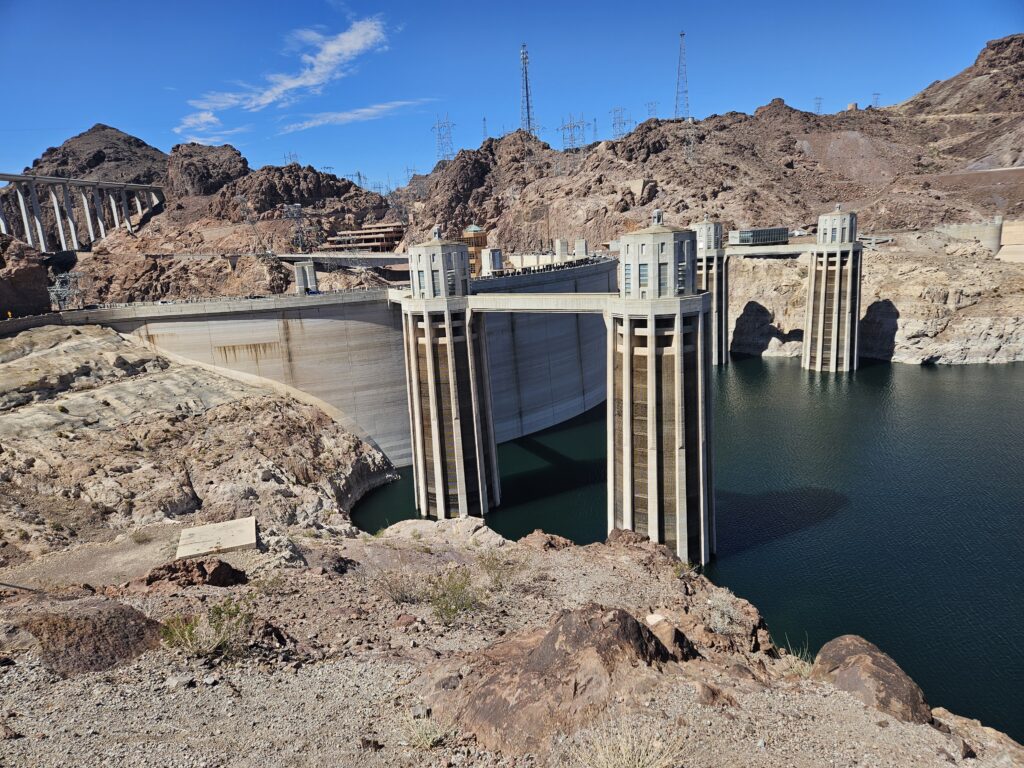Few human creations embody both technological genius and environmental awareness as powerfully as the Hoover Dam.
Built on the Colorado River during the Great Depression, this monumental project stands as more than a feat of engineering—it is a symbol of modern infrastructure, energy management, and long-term sustainability.
The story of the Hoover Dam is about innovation, resilience, and lessons learned—and about the logistics behind energy distribution that enables the flow of power, progress, and stability in our everyday lives.

The Structure That Changed a River — and a Region
The Hoover Dam solved three major challenges with one bold idea:
It tamed the Colorado River’s floods,
secured water supply across the arid Southwest, and
provided clean, renewable energy for a rapidly growing population.
Behind the dam, the creation of Lake Mead, the largest artificial reservoir in the United States, became a lifeline for millions of people and businesses.
From a logistics perspective, the dam represents an early example of energy and resource management—a system that organized the unpredictable forces of nature into a reliable, controlled flow that powered cities, industries, and agriculture.

Precision and Innovation in Engineering
At the time of its construction, the Hoover Dam pushed the boundaries of engineering and logistics alike.
221 meters tall,
200 meters thick at its base,
built with over 2.5 million cubic meters of concrete.
Engineers developed new methods to cool and cure the massive concrete walls using a network of cooling pipes—an innovation that accelerated construction and set new industrial standards.
The result is a structure that has endured for nearly a century, still operating today and producing over 4 billion kilowatt-hours of clean energy annually, powering more than a million homes across Nevada, Arizona, and California.
Environmental Impact – The Cost of Progress
Every major infrastructure project has environmental and logistical trade-offs, and the Hoover Dam is no exception.
By transforming the Colorado River, it also changed the surrounding ecosystems:
The natural flood cycles disappeared, disrupting the river’s renewal rhythm.
Sediment is trapped behind the dam, leading to erosion downstream and the loss of the once-thriving delta.
Native fish habitats vanished, and the river’s temperature and sediment balance shifted dramatically.
The river rarely reaches the Gulf of California, leaving once fertile wetlands dry.
Yet, the dam continues to provide massive environmental benefits in another form: clean energy.
Its hydroelectric power output offsets tens of millions of tons of CO₂ emissions, demonstrating how technological innovation can mitigate climate impact—if managed responsibly.
This tension between ecological cost and energy independence reflects the same challenge that modern logistics and infrastructure must solve today:
How can we ensure a reliable energy flow while protecting the natural systems that sustain us?

Lessons for Modern Logistics and Sustainability
The Hoover Dam is not only an engineering icon—it is an early case study in sustainable infrastructure logistics.
It shows that energy is not just generated—it is distributed, managed, and maintained through complex systems of coordination, materials, and people.
Modern logistics operates on similar principles:
Smart energy-efficient transport,
green supply chains,
and the integration of renewable energy into every stage of business operations.
The same mindset that built the Hoover Dam—precision, planning, and persistence—is what drives sustainable logistics today.
The Hoover Dam stands as both an engineering triumph and an environmental reminder.
It proves that progress depends not only on technology but also on how wisely we manage the systems that move energy, goods, and people.
Just as the dam once reshaped the flow of water and power, today’s logistics industry reshapes the flow of energy and sustainability.
The lesson endures: efficiency must go hand in hand with environmental respect.
At INCON, we see the same balance every day—between innovation and responsibility, between the speed of delivery and the sustainability of how we get there.
The Hoover Dam is not just a historical marvel—it’s a timeless inspiration for how we move forward.

